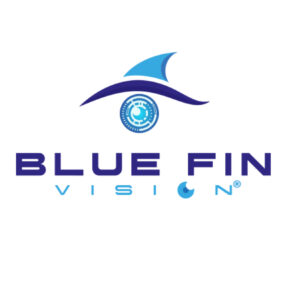Laser eye surgery has become an increasingly popular choice for people seeking an effective and permanent solution to their vision problems. Over the past few decades, this procedure has undergone remarkable advancements, making it safer, faster, and more accessible to a wider range of people. Laser eye surgery has fundamentally changed how we approach vision correction, offering patients the ability to achieve clearer vision without the ongoing hassle of wearing glasses or contact lenses.
The most commonly performed laser eye surgery is LASIK (Laser-Assisted in Situ Keratomileusis), a procedure designed to correct refractive errors such as nearsightedness (myopia), farsightedness (hyperopia), and astigmatism. Refractive errors occur when the shape of the cornea or lens prevents light from focusing correctly on the retina, causing blurry vision. LASIK surgery uses a highly precise laser to reshape the cornea, allowing light to be focused more accurately, which improves vision.
The procedure itself is relatively quick and straightforward. It begins with the administration of numbing eye drops, ensuring that the patient remains comfortable throughout the surgery. Next, a thin flap is created on the cornea, which is gently lifted to allow access to the underlying tissue. A specialized laser is then used to reshape the cornea based on the patient’s unique prescription. After reshaping, the flap is repositioned, and it naturally adheres without the need for stitches. The entire process typically takes less than 30 minutes, and many patients report improvements in their vision almost immediately after the procedure.
Recovery from laser eye surgery is typically fast and easy, with most patients experiencing only mild discomfort, such as dryness or a feeling of grittiness in the eyes, for a short period. The majority of people are able to return to their normal activities within a day or two, though it’s important to follow the surgeon’s instructions carefully to minimize any risk of complications. Regular follow-up visits are essential to monitor the healing process and Laser eye surgery ensure that the eyes are adjusting well to the new shape of the cornea.

One of the greatest advantages of laser eye surgery is its high success rate. Most patients achieve 20/25 vision or better after surgery, meaning that they can see clearly without glasses or contact lenses. This improvement is long-lasting, though it is worth noting that the surgery does not prevent age-related eye conditions such as presbyopia, which is the gradual loss of the ability to focus on close objects that typically occurs after the age of 40. In some cases, patients may require reading glasses as they age, but their overall dependence on corrective eyewear is greatly reduced.
Another benefit of laser eye surgery is the relatively low risk of complications. While no surgical procedure is without risks, laser eye surgery is considered very safe, with complications occurring in only a small percentage of cases. Most side effects are temporary and include dry eyes, glare, halos, or blurry vision, especially at night. These issues typically resolve within a few days to weeks as the eyes heal. Serious complications, such as infection or permanent vision loss, are extremely rare.
Laser eye surgery is not suitable for everyone. Ideal candidates are typically over the age of 18, with a stable prescription for at least one to two years. People with certain health conditions, such as autoimmune disorders or severe dry eye, may not be candidates for the procedure. Additionally, individuals with extremely high prescriptions may require alternative treatments, as laser eye surgery is most effective for people with moderate refractive errors.
One of the significant developments in the field of laser eye surgery in recent years is the introduction of newer technologies like SMILE (Small Incision Lenticule Extraction). SMILE is a minimally invasive alternative to LASIK that uses a femtosecond laser to create a small lens-shaped piece of tissue within the cornea, which is then removed through a tiny incision. This technique doesn’t require the creation of a large flap, reducing the risk of complications and speeding up recovery time. While LASIK remains the most widely known and practiced procedure, SMILE offers another option for those seeking vision correction.
Another promising advancement in laser eye surgery is the use of wavefront technology, which creates a detailed, customized map of the patient’s eye. This map allows the surgeon to treat not only common refractive errors but also more complex vision issues, such as higher-order aberrations, which can cause glare and halos around lights. Wavefront-guided LASIK surgery can improve the accuracy and precision of the procedure, leading to better overall outcomes and fewer side effects.
The cost of laser eye surgery has become more affordable over the years, making it a viable option for many people. While the upfront cost of surgery may be higher than purchasing glasses or contact lenses, the long-term savings can be substantial. With no ongoing costs for lenses or eyewear, many patients find that the procedure pays for itself over time. Financing options are also available for those who need assistance with the cost.
In summary, laser eye surgery has become a revolutionary option for those seeking to correct vision problems and reduce their reliance on glasses or contact lenses. With its high success rate, minimal recovery time, and long-lasting results, it is no surprise that laser eye surgery has become one of the most popular elective procedures worldwide. Whether you choose LASIK, SMILE, or another advanced technique, the benefits of improved vision can significantly enhance your quality of life. As technology continues to evolve, the future of laser eye surgery looks even brighter, offering more precise, customizable, and effective options for vision correction.